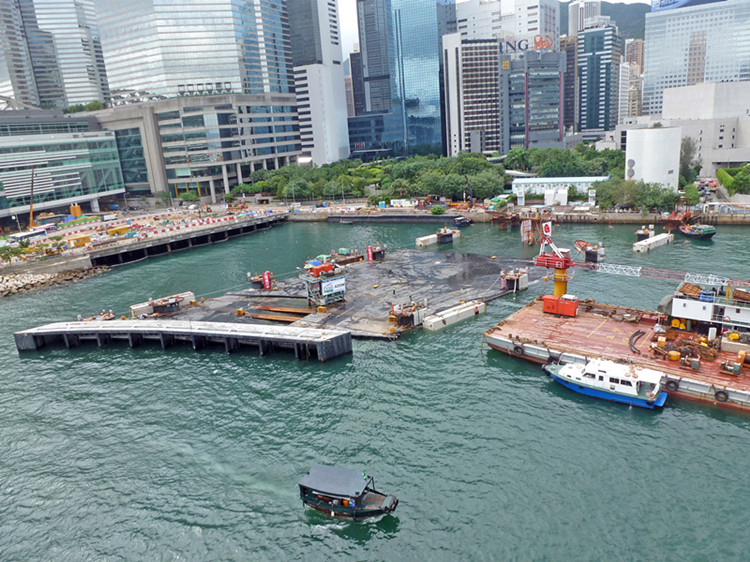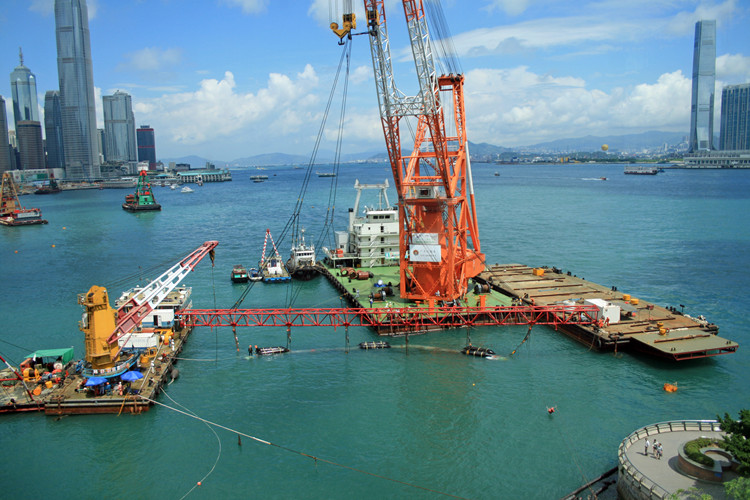Location: Hong Kong
Construction Period: May 2011 – August 2012
Project Profile:
The Wan Chai Cross Harbor Water Mains Project includes 2 nos. of DN1000 submarine water supply pipelines. The Hong Kong government invested these two water mains to replace the existing old water mains, to facilitate the daily life and economic activity of about 2 million people on the Hong Kong Island. It’s an important infrastructure project for guarantee the people’s livelihood and economic activities.
The water mains start from the southern shore of Tsim Sha Tsui, cross beneath the bridge of the Avenue of Stars and cross the Victoria Harbour, land on the western side of the Conference and Exhibition Center, northern of Wan Chai. This project locates at the most prosperous area of Hong Kong, which cause a broad impact zone. The chainage length of subsea pipeline A is 1167.5m, while the chainage length of subsea pipeline B is 1177.5m. The total chainage length of both pipelines is 2345m. The maximum construction water depth reached about 27.25m. Since the particularity of the water mains location, many turning points are designed for the pipelines’ route – 14 nos. of turning points for each pipeline, totally there are 28 nos.
Project Particularity:
Since a lot of horizontal bends and vertical bends are provided for these water mains, and since this project locates at the Victoria Harbour, where a lot of submarine structures exist, surrounding condition is complicated and a lot of limits for the barges/ships operation are set, a list of different traditional pipe laying methods such as bottom pull, use pipe laying barge to lay pipeline, fabricate the whole pipeline and then float and sink and etc. could not be used. At last, a construction method of “divide the pipelines into sections for fabrication and installation, and connect the pipe sections by flanges” had been selected.
Innovations:
The underwater pipe sections connection technology use underwater power only, pulling and jointing the pipe sections (70m-72m long per section, weigh 250kg/m underwater), avoiding the unpredictable impacts on the pipeline safety due to the unstable of barges.


